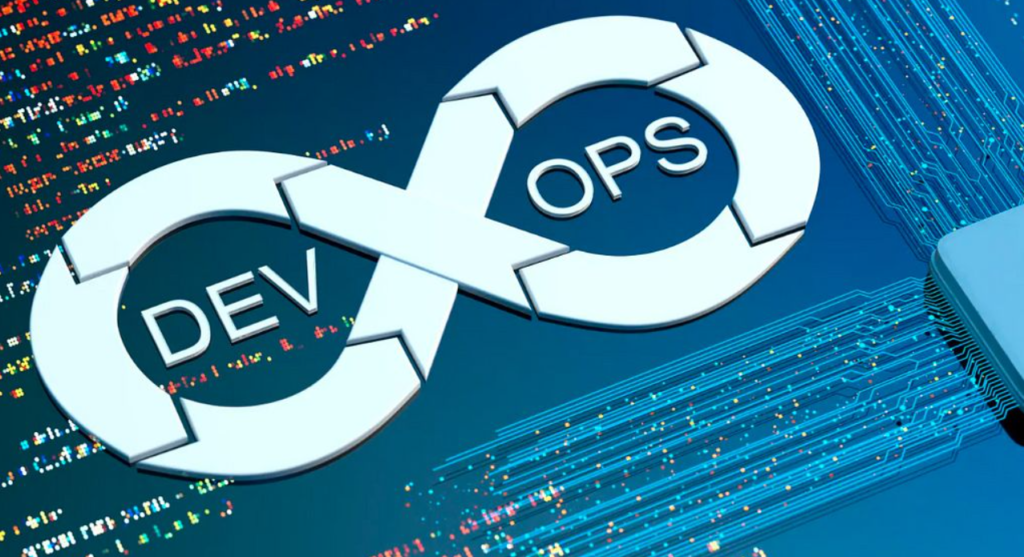Introduction to DevOps
DevOps is a transformative approach that bridges the gap between software development (Dev) and IT operations (Ops), fostering collaboration to accelerate delivery cycles while maintaining quality. At its core, DevOps emphasizes automation, continuous integration/continuous delivery (CI/CD), and shared accountability across teams. Unlike traditional siloed workflows, it unifies coding, testing, deployment, and monitoring into a streamlined lifecycle. By breaking down organizational barriers, DevOps enables faster feedback loops, reduces bottlenecks, and ensures that software evolves in alignment with user needs and business goals.
The cultural shift underpinning DevOps is as critical as its technical practices. It encourages developers and operations teams to adopt a “you build it, you run it” mindset, fostering ownership and transparency. Tools like Jenkins for automation, Docker for containerization, and Kubernetes for orchestration empower teams to standardize workflows and eliminate manual errors. This cultural and technological synergy allows organizations to respond swiftly to market demands, deploy updates reliably, and maintain resilient systems even as complexity grows.
From a business perspective, DevOps drives competitive advantage by enabling rapid innovation. Companies adopting DevOps practices report shorter time-to-market, improved operational efficiency, and enhanced customer satisfaction. By automating repetitive tasks and prioritizing infrastructure-as-code (IaC), teams can focus on strategic initiatives rather than firefighting. Furthermore, DevOps aligns with cloud-native architectures, microservices, and scalable systems, making it indispensable in today’s fast-paced digital economy.
However, DevOps is not a one-size-fits-all solution. Success hinges on tailoring practices to organizational needs, fostering continuous learning, and addressing challenges like legacy system integration or security compliance. As industries increasingly prioritize agility and resilience, DevOps has evolved beyond a methodology into a critical enabler of digital transformation, reshaping how businesses build, deliver, and scale software.

Top 50 DevOps Interview Questions & Answers
- What is DevOps?
DevOps is a culture and set of practices that combine software development (Dev) and IT operations (Ops) to shorten the development lifecycle and deliver high-quality software continuously. - Explain CI/CD.
CI (Continuous Integration) involves automating code integration and testing. CD (Continuous Delivery/Deployment) automates delivering code to production after CI. - What is Infrastructure as Code (IaC)?
IaC manages infrastructure using code (e.g., Terraform, CloudFormation), enabling version control, consistency, and repeatability. - Name key DevOps tools.
Jenkins, Docker, Kubernetes, Ansible, Terraform, Git, Prometheus, Grafana. - What is a Docker container?
A lightweight, standalone executable package that includes code, runtime, libraries, and system tools. - How does Kubernetes differ from Docker Swarm?
Kubernetes offers advanced orchestration, auto-scaling, and self-healing, while Docker Swarm is simpler but less feature-rich. - What is a Jenkins Pipeline?
A suite of plugins defining CI/CD workflows using code (Jenkinsfile) for automated build, test, and deployment stages. - Explain blue/green deployment.
Two identical environments (blue: active, green: idle). Deploy to green, test, then switch traffic to minimize downtime. - What is Canary Deployment?
Rolling out updates to a small user subset first, monitoring performance, before full deployment. - Define “idempotency” in Ansible.
Ansible ensures running the same task multiple times produces the same result without side effects. - What is Terraform’s state file?
A JSON file tracking managed infrastructure and metadata to map resources to configuration. - How do you secure secrets in DevOps?
Use tools like HashiCorp Vault, AWS Secrets Manager, or encrypted environment variables. - What is the role of Prometheus?
An open-source monitoring tool that collects metrics, queries data, and triggers alerts. - Explain the ELK Stack.
Elasticsearch (search/analytics), Logstash (log processing), Kibana (visualization) for centralized logging. - What is Git branching strategy?
Methods like Git Flow or GitHub Flow to manage code changes (e.g., feature branches, main branch protection). - What is a Kubernetes Pod?
The smallest deployable unit in Kubernetes, hosting one or more containers sharing resources. - Describe “Shift-Left” in DevOps.
Integrating testing, security, and compliance early in the development lifecycle. - What is a load balancer?
Distributes network traffic across servers to optimize resource use and ensure high availability.

- How does Ansible work?
Uses SSH to execute tasks defined in YAML playbooks on target nodes without requiring agents. - What is a Dockerfile?
A text file with instructions to build a Docker image (e.g., base image, dependencies, commands). - Explain Kubernetes Helm.
A package manager for Kubernetes, using “charts” to define, install, and upgrade applications. - What is AWS CloudFormation?
An IaC tool to model and provision AWS resources using JSON/YAML templates. - How do you debug a failing Kubernetes Pod?
Use kubectl describe pod, kubectl logs, or kubectl exec to inspect errors. - What is a Namespace in Kubernetes?
A virtual cluster to isolate resources (e.g., environments, teams) within a physical cluster. - What is a Service Mesh?
Manages service-to-service communication (e.g., Istio) with features like load balancing and encryption. - Why use a reverse proxy like Nginx?
To handle SSL termination, load balancing, caching, and routing requests to backend services. - What is the difference between Git Merge and Rebase?
Merge preserves branch history, while Rebase rewrites history for a linear commit sequence. - What is Immutable Infrastructure?
Servers are never modified after deployment; changes require replacing with new instances. - How does Serverless fit into DevOps?
Serverless (e.g., AWS Lambda) abstracts infrastructure, allowing focus on code and CI/CD pipelines. - What is a DaemonSet in Kubernetes?
Ensures all/nodes run a copy of a Pod (e.g., for logging agents or monitoring tools). - Explain the CAP Theorem.
Distributed systems can’t simultaneously guarantee Consistency, Availability, and Partition Tolerance. - What is the difference between Rolling and Recreate Deployment?
Rolling updates replace Pods incrementally (no downtime); Recreate kills all Pods before deploying new ones. - What is AWS CodeDeploy?
Automates application deployments to EC2, Lambda, or on-premises servers. - How do you manage configuration drift?
Use IaC tools to enforce desired state and regularly audit configurations. - What is Azure DevOps?
A Microsoft SaaS platform providing CI/CD pipelines, repositories, and project management tools. - What is the role of Grafana?
Visualizes metrics (from sources like Prometheus) via customizable dashboards. - Define “Infrastructure Drift”.
When actual infrastructure diverges from the state defined in IaC due to manual changes. - What is a Kubernetes Ingress?
Manages external access to cluster services (HTTP/HTTPS routing, SSL termination). - What is SonarQube?
A static code analysis tool to detect bugs, vulnerabilities, and code smells. - How do you handle database migrations in CI/CD?
Use tools like Liquibase or Flyway to version-control and automate schema changes. - What is a Jenkins Agent?
A worker node that executes pipeline jobs, distributing workloads across multiple machines. - Explain the Twelve-Factor App methodology.
Best practices for cloud-native apps (e.g., stateless processes, environment parity, disposability). - What is Chaos Engineering?
Intentionally introducing failures to test system resilience (e.g., using Chaos Monkey). - What is the difference between Docker and a VM?
Docker containers share the host OS kernel, making them lighter and faster than VMs with full OS. - What is a .gitignore file?
Specifies files/directories excluded from Git tracking (e.g., logs, binaries). - How do you monitor Kubernetes clusters?
Use Prometheus for metrics, Grafana for dashboards, and the Kubernetes Dashboard for resource tracking. - What is GitOps?
Uses Git as a single source of truth for infrastructure and app deployments, automated via CI/CD. - What is a Pod Disruption Budget (PDB)?
Ensures a minimum number of Pods remain available during voluntary disruptions (e.g., node maintenance). - What is the purpose of a linter in DevOps?
Analyzes code for errors, style issues, and security vulnerabilities (e.g., YAML, Dockerfile linters). - How do you ensure compliance in pipelines?
Integrate security scans (SAST/DAST), audit logs, and approval gates in CI/CD workflows.
Note: Answers are concise summaries. Tailor responses based on specific tools/experiences during interviews.
Conclusion on DevOps
DevOps has revolutionized the software industry by merging development and operations into a cohesive, iterative process. Its emphasis on automation, collaboration, and continuous improvement has redefined how organizations deliver value to users. By integrating CI/CD pipelines, IaC, and robust monitoring, DevOps ensures that software releases are not only faster but also more reliable. This approach has become a cornerstone of modern IT strategies, enabling enterprises to thrive in an era of rapid technological change.

The true power of DevOps lies in its ability to foster a culture of shared responsibility. Teams that embrace DevOps principles prioritize communication, iterate based on feedback, and view failures as opportunities for growth. Tools like Terraform for infrastructure management and Prometheus for monitoring further amplify this mindset, creating systems that are both scalable and resilient. As a result, organizations can maintain high availability, reduce downtime, and adapt seamlessly to evolving requirements.
Looking ahead, DevOps will continue to evolve alongside emerging technologies like AI-driven operations (AIOps), GitOps, and serverless architectures. These advancements will further automate workflows, enhance predictive analytics, and minimize human intervention in routine tasks. However, the human element—collaboration, innovation, and adaptability—will remain central to DevOps success. Organizations must invest in upskilling teams and fostering environments where experimentation and agility are encouraged.
We may conclude here, DevOps is not merely a set of tools or practices but a philosophy that aligns technical excellence with business outcomes. As digital transformation accelerates, adopting DevOps is no longer optional but essential for staying competitive. By embracing its principles, businesses can build future-ready systems, deliver unparalleled user experiences, and navigate the complexities of the modern tech landscape with confidence.
Curated Reads





